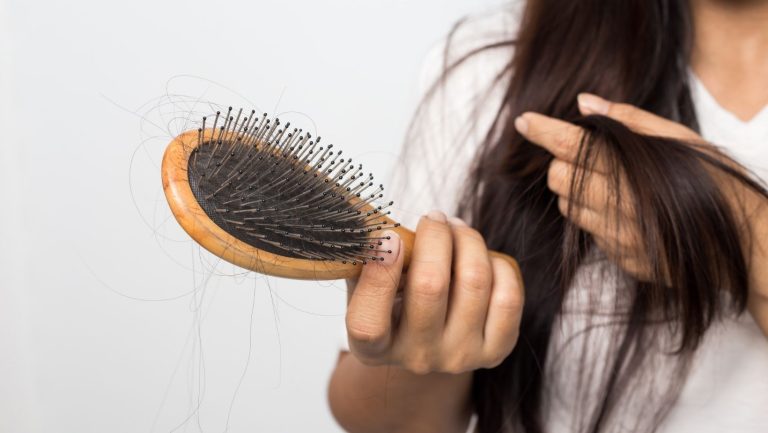What is hair loss?
Alopecia, commonly known as baldness, typically refers to excessive loss of hair from the scalp and is experienced by more than half of men and women in the world at some point in their lives. In addition, nearly 30 percent of people suffer some kind of hair loss by age 30 and about 50 percent have it by age 50. In fact, hair loss is so common that it is often considered a normal sign of aging and not a disease.
What are the causes?
Hair loss is often caused by thyroid disorders, hormonal imbalances, anaemia, periods of high stress or insufficient nutrient absorption.
Normal hair growth and loss occur in cycles and not all hairs go through the same cycle at the same time. During the growth stage, hairs grow for a period of 2-6 years before being shed for a period of 3-6 months. On average, hair grows at a rate of 0.35 mm per day and when in a shedding phase, 100 hairs can be lost in a day. Due to the inequities of these cycles, it may look like you are losing great volumes of hair during a loss phase and then with the slow hair regrowth you may not be able to see new hairs until a substantial amount of time has passed.
The hair is more a reflection of your health history over the last 6-18 months than your current health status. With causes of hair loss ranging from systemic disease and autoimmune conditions to drug use, chemical exposure, chemotherapy, iron deficiency, fever, weight loss and severe emotional or physical stress, we need to consider the health history when diagnosing the cause of hair loss. Current hair loss may be a result of a health issue that has since resolved but you are just seeing the impact now.
What are conventional treatments for hair loss?
Conventional hair loss remedies and treatments focus not on a hair loss cure, but on promoting hair growth or hiding hair loss. First priority should be to recognize and treat identifiable causes of hair loss, such as medications, infections, nutritional deficiencies, medical conditions or hormonal imbalances.
Certain drug treatments may help to slow or prevent the development of pattern baldness in men or women. Minoxidil is available without a prescription and is used for pattern baldness. It is directly applied as a liquid or foam to the scalp. New hair growth may be shorter and thinner than normal but sufficient enough to hide bald spots or blend with existing hair. It may take several weeks to notice an effect of this hair loss treatment, and new hair growth slows down soon after you stop taking it.
Ointments and creams can also be used but aren’t as effective. Another topical hair loss treatment consists of using Anthralin ointment, a synthetic substance made from tar used to treat skin conditions such as psoriasis that may stimulate hair growth in those with autoimmune hair loss.
Surgical treatments involving hair transplantation or scalp reduction are often a last resort but may be effective in the right candidate, although they can be expensive.
The Naturopathic Approach
In naturopathic medicine, we must first diagnose the cause of disease before treating it. Instead of suppressing symptoms, our goal is to uncover what is causing the symptoms and treat the problem at its core. Once we have determined the cause, treating hair loss can vary widely from balancing thyroid, to improving nutrient absorption and assimilation, managing stress, treating underlying disease or regulating an overactive immune system.
For improving the health and vitality of the hair and providing the building blocks for hair production, the following nutrients are essential:
- Biotin, a B vitamin, is crucial for the growth of hair, skin, and nails and is best used in conjunction with a B vitamin complex.
- Essential fatty acids(primarily the omega 3’s) are also important for hair growth and maintenance. Food sources include fish (salmon, anchovy, sardine and krill,) flaxseeds, spinach, kale, walnut and pumpkin seeds.
- Iron, a mineral needed for oxygenation of the blood, is important for hair health. Iron should only be supplemented if a blood test shows an iron deficiency anaemia or low ferritin count. Iron can be stored in the body and high iron levels are just as damaging as low levels.
- Zinc. This mineral is present in all of our cells and plays an important role in thyroid hormone production. Pumpkin seeds are an excellent source of zinc as well as providing beneficial essential fatty acids.
Some causes of hair loss are due to insufficient circulation to the scalp, which can be improved with scalp massage. For scalp massage use a base oil that is good for the scalp such as jojoba oil, or olive oil. Apply oil to fingertips and gently massage the scalp in small circular motions from the temples (above the ears) working your way up the sides of the head to the top. Then massage from the back of the neck up the back of the head to the top. Practice taking deep, full breaths while doing your massage and allow yourself to feel the sensation of the fingertips on the scalp while releasing any thoughts. Just be in the moment and let go of any concerns. Deep breathing will also increase the blood flow to the scalp bringing with it fresh nutrients and oxygen.


